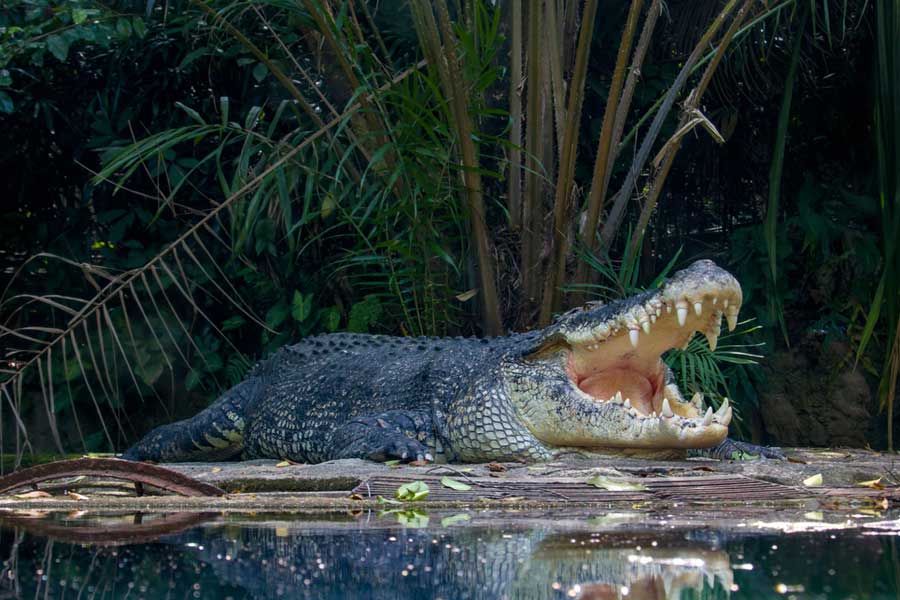The annual monsoon woe of crocodiles leaving the safe confines of Vishwamitri river and entering residential areas of Gujarat's Vadodara city aided by flooded streets is being witnessed again this year, with 21 of these reptiles getting rescued last month, an official said on Sunday.
The river, 17 kilometres of which pass through Vadodara, is home to some 300 crocodiles and an encounter with these reptiles is a common occurrence for those living in areas along its banks, the official said.
"While rescue of crocodiles from residential areas near the bank of Vishwamitri river continues throughout the year, the number rises significantly during monsoon. In June, four crocodiles were rescued and released back into the river. The number rose sharply to 21 in July," informed Range Forest Officer (RFO) Karansinh Rajput.
"Many parts of the state witnessed heavy rainfall in July, flooding low lying areas. With residential areas coming up on both sides of the Vishwamitri river, the sighting of crocodiles on the streets of the city have also increased. These crocodiles also use a canal network to move from one water body to another. Some are found in lakes connected to the river, such as Ajwa on the outskirts of Vadodara," the official explained.
However, he added that wild animals do not prefer to leave their territory and these crocodiles like to return to the river, which they leave when it is in spate.
Wildlife activist Hemant Vadhwana said crocodiles also use the storm water drain network at times to come into the residential areas of the city, though no such case has been reported so far this year.
"Such instances were reported during the floods of 2019. This time, we have rescued mostly small crocodiles, and that too from near the river banks," he added.
The mugger crocodile, the species found in Vadodara, is a medium-to-large species, with an adult male reaching up to 4.5 metres (18 feet) in length and with weighing around 450 kilograms, as per the Wildlife Institute of India.
It has a distinctive aspect, which is that it is the most alligator-like of all crocodile species, with juvenile's generally having a light tan colouring with some black cross-banding on the body and tail, while adult specimens are mostly grey to brown, as per information from the WII.
Except for the headline, this story has not been edited by The Telegraph Online staff and has been published from a syndicated feed.












